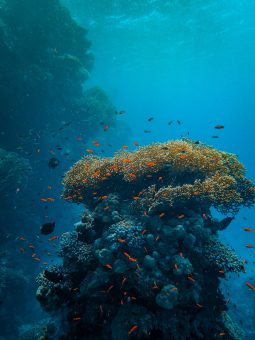Some facts pass us by like a summer breeze, while others strike directly at our conscience. Such was the case with a study I recently read — an analysis by scientists at Oregon State University examining the impact of climate change on the animal kingdom. And no matter how aware I thought I was of the problem, this study shook me to the core.
Ecology professor William Ripple and his team used publicly available biodiversity data covering 70,814 species across 35 known classes. Their analysis led to the conclusion that more than 3,500 animal species are currently at serious risk due to climate change. And these are not just the iconic large animals we see in documentaries — they include the often overlooked heroes of our ecosystems: invertebrates, corals, centipedes, and tiny ocean creatures without which entire systems begin to collapse.
“We are particularly concerned about ocean invertebrates, which absorb most of the heat from climate change. These animals are increasingly vulnerable due to their limited ability to move and quickly escape unfavorable conditions,” Ripple stated.
One of the most striking examples comes from the Israeli coast, where in 2021 a dramatic 90 percent decline in mollusk populations was recorded, caused by rising sea temperatures. This was not an isolated event.

During the devastating heat dome that struck the Pacific Northwest that same year, billions of intertidal invertebrates perished within a short time. These events highlight how vulnerable marine organisms — especially those unable to move or adapt quickly — are to the intensifying effects of climate change.Their extinction represents not only a biological loss but a serious threat to the stability of entire marine ecosystems.
Equally tragic, the Great Barrier Reef suffered a catastrophic loss of 29 percent of its coral organisms in 2016, again due to an extreme heatwave. In the same period, four million thin-billed murres (a species of seabird) died of starvation. The cause? Climate change disrupted the food web — plankton, fish, the entire system fell out of balance.
The same applies to the Pacific cod, whose population plummeted by an astonishing 71 percent due to increased metabolic demands and a reduced food base. As I read these alarming facts, I couldn’t help but wonder — how many more species will we lose in the coming years without even knowing it?
Because the truth is even worse: more than two-thirds of all animal classes have not yet been assessed for climate-related extinction risk. The IUCN (International Union for Conservation of Nature), whose Red List is often the foundation for conservation efforts, exhibits a serious bias — it focuses mainly on vertebrates, which make up less than six percent of all named species.
This means that millions of species — particularly invertebrates — simply don’t exist in the data. That’s why Professor Ripple is calling for the urgent creation of a global database on mass animal mortality caused by climate change. And I completely understand him. We cannot protect what we do not know. We cannot make political decisions without data. And we cannot remain blind while ecosystems around us are collapsing.
Climate justice is not just a fight for clean air or lower temperatures. It is a fight for every living being that shares this home with us. If not for their sake, then for ours — because if they disappear, the question becomes: how long will we last?
Milena Maglovski

